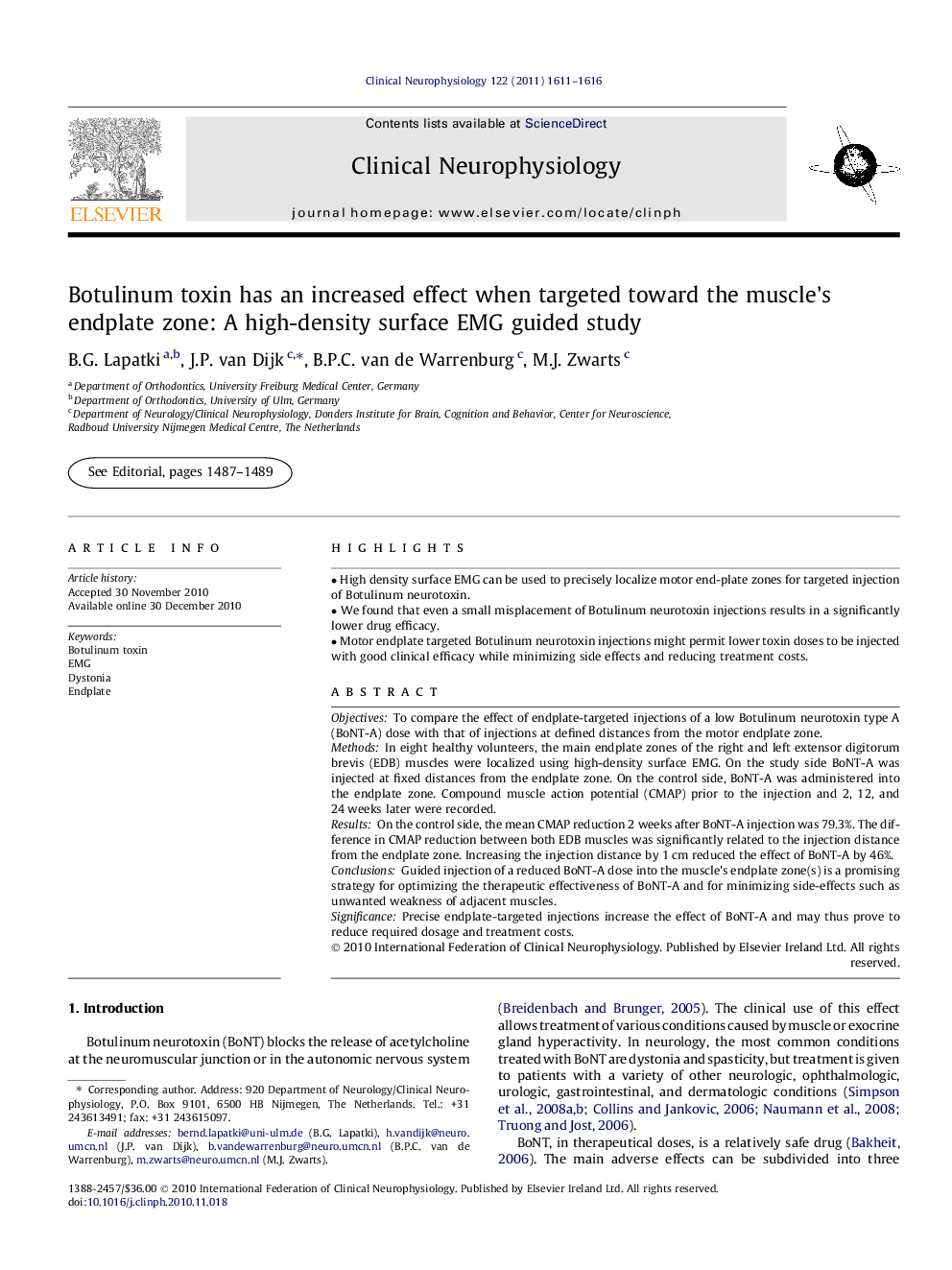| Article ID | Journal | Published Year | Pages | File Type |
|---|---|---|---|---|
| 3044026 | Clinical Neurophysiology | 2011 | 6 Pages |
ObjectivesTo compare the effect of endplate-targeted injections of a low Botulinum neurotoxin type A (BoNT-A) dose with that of injections at defined distances from the motor endplate zone.MethodsIn eight healthy volunteers, the main endplate zones of the right and left extensor digitorum brevis (EDB) muscles were localized using high-density surface EMG. On the study side BoNT-A was injected at fixed distances from the endplate zone. On the control side, BoNT-A was administered into the endplate zone. Compound muscle action potential (CMAP) prior to the injection and 2, 12, and 24 weeks later were recorded.ResultsOn the control side, the mean CMAP reduction 2 weeks after BoNT-A injection was 79.3%. The difference in CMAP reduction between both EDB muscles was significantly related to the injection distance from the endplate zone. Increasing the injection distance by 1 cm reduced the effect of BoNT-A by 46%.ConclusionsGuided injection of a reduced BoNT-A dose into the muscle’s endplate zone(s) is a promising strategy for optimizing the therapeutic effectiveness of BoNT-A and for minimizing side-effects such as unwanted weakness of adjacent muscles.SignificancePrecise endplate-targeted injections increase the effect of BoNT-A and may thus prove to reduce required dosage and treatment costs.
► High density surface EMG can be used to precisely localize motor end-plate zones for targeted injection of Botulinum neurotoxin. ► We found that even a small misplacement of Botulinum neurotoxin injections results in a significantly lower drug efficacy. ► Motor endplate targeted Botulinum neurotoxin injections might permit lower toxin doses to be injected with good clinical efficacy while minimizing side effects and reducing treatment costs.
